One of the best ways to grow healthy and productive tomato plants in your garden is by powering your plants on a regular schedule – and there is no safer and better way to do that than to fertilize your tomatoes naturally!
Tomato plants are heavy feeders. It takes a lot of nutrients and energy in order to produce those delicious, juicy fruit that we all love and know. As the tomato plants grow, they will start to use up all of those natural resources within the surrounding soil.
If you do not replenish those nutrients and resources somehow during the growing season, your tomato plants will start to struggle. A once lush and thriving tomato plant will be just that – a beautiful plant full of foliage but unable to produce flowers and fruit.
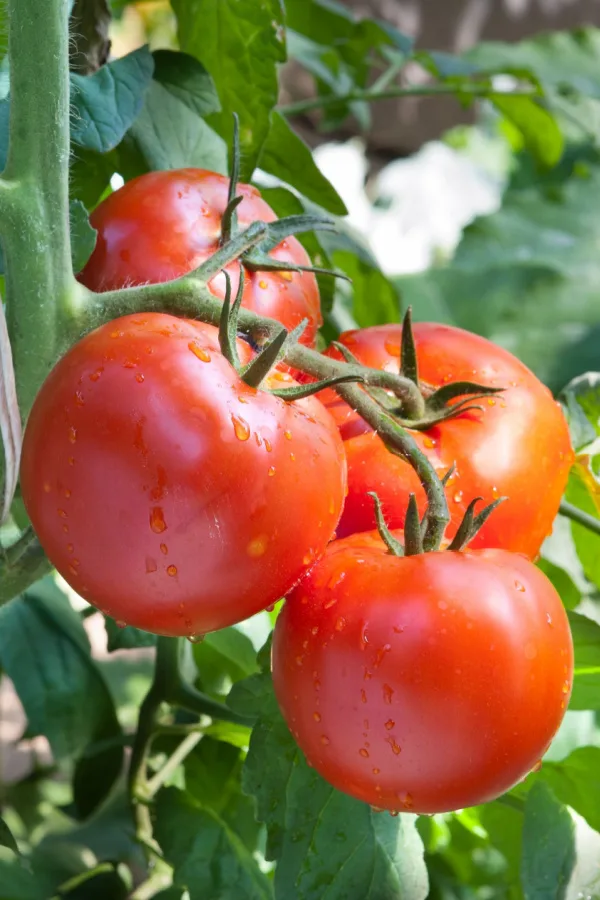
While you can turn to commercial and synthetic fertilizers, there is a much better way for many tomato growers. This is especially true and important if you are wanting to create a 100% organic gardening experience.
Below, you will learn about three different ways to fertilize your tomato plants, all by using natural and inexpensive ingredients. The methods are simple, the materials are easily accessible, and the results will speak for themselves!
How To Fertilize Tomatoes Naturally – 3 Great Ways
Compost
There’s a reason why compost is the golden standard when it comes to fertilizing tomato plants and other garden crops. It’s natural yet powerful and chocked full of organic materials and vital nutrients.
Compost is the organic material that is created when items are broken down and decomposed. While all products eventually break down, there are some materials that are better used for composting than others. To create amazing compost, you need a balanced mixture of brown and green materials in order to create amazing compost.
While you can purchase aged compost from many garden centers or even some big box stores, it’s very easy (and economical!) to make your own compost at home. Gardening and composting tend to go hand-in-hand, so check out “How To Compost Like A Pro” for an in-depth look at making your own compost.
How To Use Compost To Fertilize Tomatoes Naturally
No matter how you acquire your compost, the methods of using it for your tomato plants are the same.
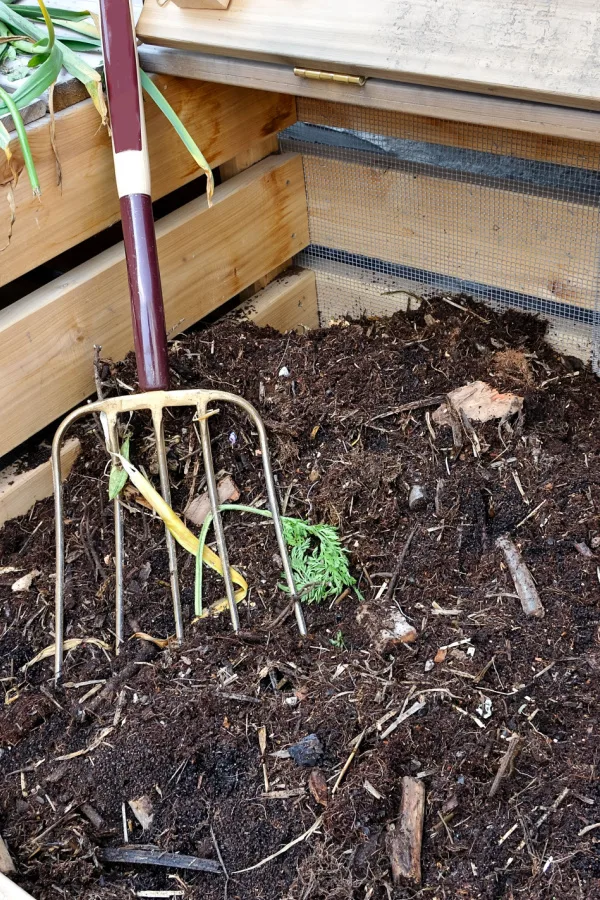
When transplanting your tomato plants to your garden or raised beds, add several cupfuls to your soil. The compost mixed in with your soil will help to loosen and aerate the soil, allowing roots to better take hold. In addition, the initial added nutrients and minerals will help establish strong and healthy plants right from the start.
Once plants are growing well, you can use compost in two different ways to benefit the tomato plants. First, you can top dress with compost being used as a natural mulch. Not only will the compost help to regulate soil temperatures, retain moisture, and help snuff out weeds, but it will also help to power your plants, too.
Every time you water your tomato plants or it rains, your plants will get a nice dose of nutrients sent right to the roots of the plants. It’s a great way to slowly release fertilizer to your tomato plants, all without needing to do anything extra!
Another way to use compost on mature plants is to create a simple compost tea fertilizer. Fill a 5-gallon bucket about a fourth of the way with compost and top it off with water. Cover and allow the mixture to soak for a few days, stirring or shaking occasionally.
You can use the liquid every couple of weeks while the solid compost can go back to your compost pile. Not only can you add the compost tea around the base of your tomato plants, but you can also spray it on the leaves as well. You can’t do that with most commercial fertilizers!
Worm Castings
If you’ve never heard of worm castings before, then you aren’t alone. Simply put, worm castings are the manure left behind as worms travel along the soil. This material is packed full of nutrients and vitamins that can benefit plants just as well as traditional compost.
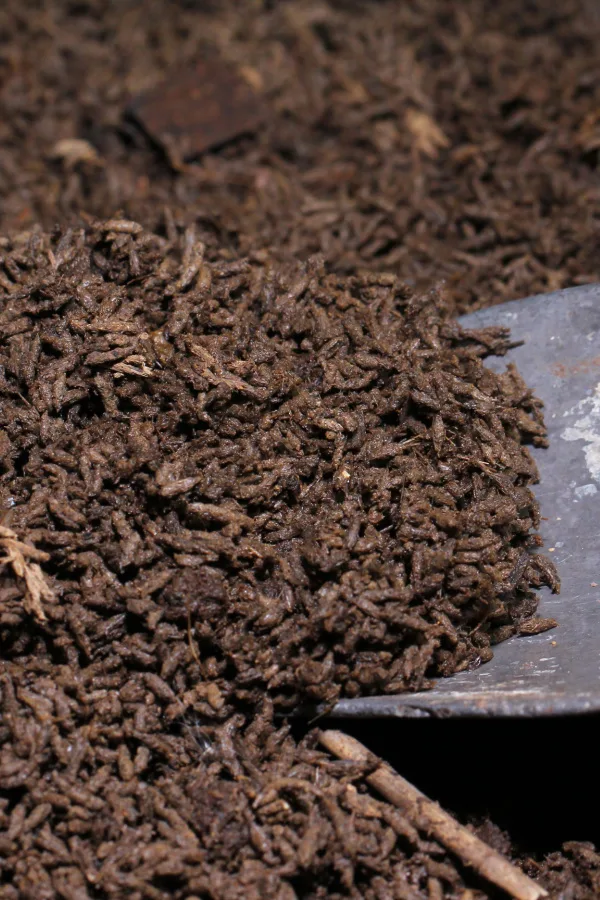
As worms move through the soil, they constantly digest small organisms and organic material within the soil. These materials then get broken down a bit more as they move through the worms’ digestive tracts. The end product is an all-natural yet powerful organic fertilizer.
Worm castings are rich in minerals like potassium, phosphorous, nitrogen, calcium, and magnesium. Many of these nutrients are vital for tomatoes to be able to grow and produce a bountiful harvest.
The best part about worm castings is that you can use the material immediately. There is no need for maturing and aging like there is with traditional animal manures. That means you can apply them to your tomato plants as soon as needed.
How To Use Worm Castings To Fertilize Tomatoes Naturally
You can either purchase worm castings or you can make your own. If you’d like to learn more about making your own castings, check out “How To Use Worm Castings To Power Plants”. If you’d prefer to purchase worm casings, there are many great options available both online and in most garden centers. (Product Link: Wiggle Worm Soil Builder Worm Castings)
There are many different ways to use worm castings with your tomato plants, but you can start using them from day one! You can add about a quarter cup to your seed starting mix when starting your seeds indoors. The worm castings are gentle enough to not burn tender seedlings but still provide them with a bit of slow-release nutrients.
When transplanting your tomato plants into the garden, you can add a handful of worm castings into the hole before adding your plant. This will help transplants establish good root growth while also powering foliage growth.
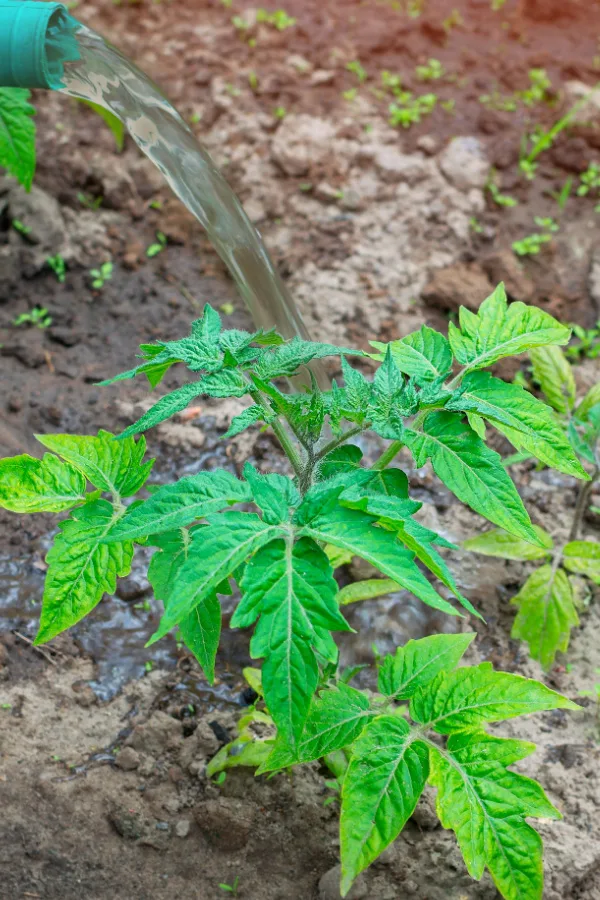
Lastly, you can create a worm casting tea by soaking about half a cup of castings with 2 gallons of water. Cover and allow the mixture to sit for at least a few days, stirring occasionally. Apply about one-fourth of a gallon around the base of each tomato plant whenever established plants need a little nutritional boost (about every two to three weeks).
Green Grass Clippings
Last but not least is green grass clippings. Picking up your grass clippings after mowing is a great way to keep your lawn looking tidy and clean. But did you know that you can use those grass clippings for more than keeping your yard looking good?
Grass clippings actually contain about 4% nitrogen, 2% potassium, and about 1% phosphorus. In addition, they also have small traces of many other different minerals and nutrients that are great for powering tomato plants.
Always be sure to only use grass clippings that have not been treated with any type of sprays or chemicals. Anything you put on your lawn prior to mowing will get transferred to your garden when you use the clippings amongst your plants.
How To Use Grass Clippings To Fertilize Tomatoes Naturally
A great way to use grass clippings in your garden is as a natural mulch. Add several inches of clippings around the base of tomato plants, keeping the grass an inch or two away from the base. The clippings will help to retain moisture, lower soil temperatures, and help to suppress weeds.
In addition, when you use grass clippings as a mulch around your plants, they turn into a perfect slow-release light fertilizer that leeches those nutrients out as the grass breaks down and decomposes. As time passes, the height of the clippings will start to lower. All you have to do is simply add more on top and the process continues all growing season long.
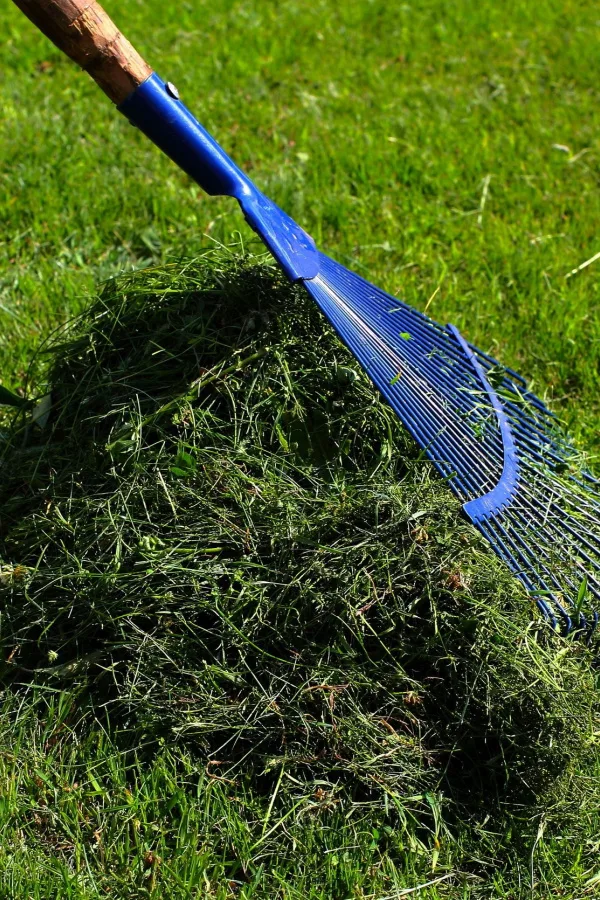
Another way to use grass clippings is to make grass clippings tea (similar to the teas mentioned above). This tea is a great, all-natural and 100% organic liquid fertilizer for tomato plants.
Simply fill a 5-gallon bucket about two-thirds of the way with clippings and top the rest off with water. Cover and allow the mixture to sit for about a week, stirring occasionally. Strain the clippings out and add them to your compost pile. Add about one to two cups of tea to your tomato plants every couple of weeks.
Any one of these 100% organic options is a great way to naturally power your tomato plants throughout their growing season this year. They are natural, easy, and allow you to reap the benefits long into the harvest!
Follow Our Facebook Page For Even More Great Tips! Simple Garden Life Facebook Page
Simple Garden Life is a website dedicated to keeping gardening fun, simple and enjoyable! We publish two new articles each week along with a new garden podcast episode every two weeks. This article may contain affiliate links.
